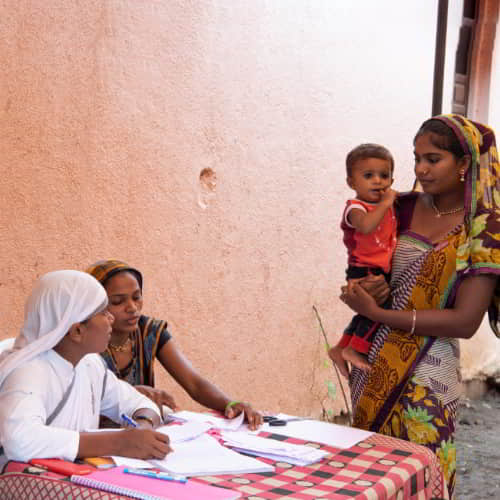Poverty and Healthcare Access: Bridging the Gap for Vulnerable Communities
Ensuring access to quality healthcare is crucial, especially for women and children who bear the brunt of inadequate healthcare systems. However, statistics show that in low- and middle-income countries, only a fraction of mothers and children from the poorest households receive essential maternal and child health interventions.[1] This article delves into the interconnectedness of health and wealth, highlighting the urgent need for universal healthcare access to break the cycles of poverty and poor health.
Healthcare is not just a matter of individual well-being; it is also a driving force behind societal progress. UNICEF Executive Director Anthony Lake emphasizes that universal health coverage can level the playing field for children, enabling them to reach their full potential and breaking intergenerational cycles of poverty and poor health. The World Health Organization’s Director General, Dr. Tedros Adhanom Ghebreyesus, further emphasizes that good health empowers individuals, enhances learning, boosts productivity, and fosters thriving communities, businesses, and nations.[2]
Inequities in healthcare access persist due to various barriers faced by marginalized populations. Poverty, geographic remoteness, and limited infrastructure exacerbate the challenges of accessing healthcare. Financial constraints prevent many individuals from seeking medical care, as they struggle to cover even basic transportation costs or afford time off from work. These obstacles perpetuate a vicious cycle, with individuals becoming sicker and the health-wealth divide widening.
Champalal, a day laborer from a rural South Asian village, exemplifies the challenges faced by many. Living far from a hospital and lacking funds, he had never received medical treatment despite months of declining health. With his inability to work and provide for his family, Champalal’s situation became desperate. Fortunately, he discovered a free medical clinic organized by GFA in a nearby village, where he received essential medicine. Champalal’s experience highlights the importance of medical camps and the dire consequences faced by those who lack access to healthcare.
Data from the WHO and the World Bank reveal that globally, at least half the population lacks access to essential health services. While progress has been made in areas such as life expectancy and maternal and child mortality rates, significant challenges persist. The statistics provided are not mere numbers; they represent real people whose lives are impacted by the absence of adequate healthcare. It is important to consider these figures as conservative estimates, as access to clean water and sanitation must also be factored into the assessment.


Comments
Post a Comment